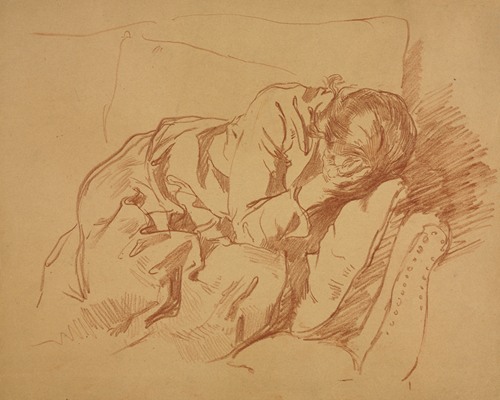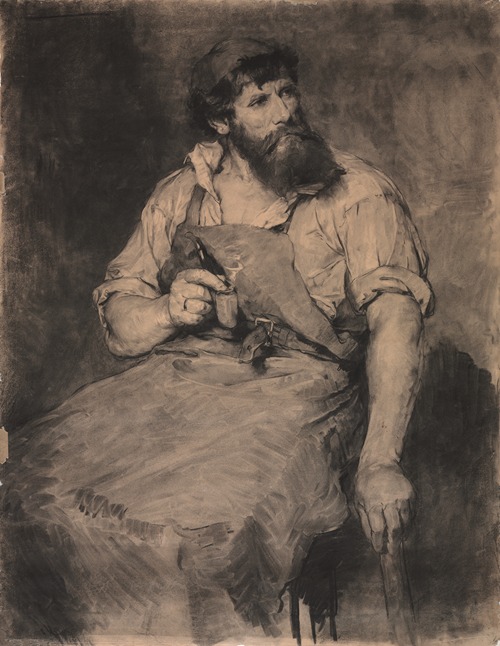


Samuel Crone was born in Columbia, Tennessee to German immigrants George and Margaret Crone. The family soon moved to Memphis, where the children grew up. During his youth, Sam apprenticed in one of the city's many photography studios, where he eventually specialized in painting portraits from photographs. By 1877 he was listed in the Memphis city directory as an artist. That year he left for Munich, Kingdom of Bavaria, to matriculate in the Royal Academy of Fine Art, which was then Europe's premier school of art. He completed his studies in 1881 and remained in Europe to pursue his career as a painter.
Samuel Crone's career was bright at the time of his graduation from the Royal Academy. He had won a prestigious medal in 1881, and his masterpiece, the painting that culminated his studies, was widely heralded and reproduced in publications. Later paintings were shown in prestigious salon-style exhibitions in Philadelphia and New York as well as European cities. However, daily life requires regular income, and it is likely that most of his practice consisted of modest paintings for gallery sales to upper middle class buyers. The relatively few paintings that we know about cover a wide spectrum of types within the academic tradition: genre scenes, landscapes, harbor scenes, still life and allegorical subjects.
During the two decades after his formal training, Crone lived primarily in Munich but stayed for periods in London, Paris, and Rome, where he continued his education by studying the techniques of great artists that he found in the major museums. He made two trips in 1885 and 1892-1893 to the United States. The first trip was with his new wife, Sarah Voegtly Crone, whom he met and married in London, to visit his family in Memphis and hers in Pittsburgh. In 1892, they apparently tested the idea of relocating the U.S. but returned to Europe in 1893, where they moved around in Germany, Switzerland and Italy until their final return to the U.S in 1913. Sam contracted pneumonia and died 16 days after they landed in New York. All of his unsold work, including the drawings in this show, remained with his wife in Pennsylvania and was passed on to her nieces and nephews and their children.


